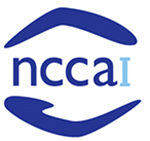Eyewitness Identification
Mistaken identification is the leading cause of over 75% of the wrongful conviction cases across the country. Yet, eyewitness testimony is considered compelling evidence and has for years been the foundation upon which many cases have been prosecuted. In 1999, the National Institute of Justice estimated that each year 75,000 people are charged with a crime in the U.S. due to eyewitness identification. Many defendants have been convicted on the basis of eyewitness testimony alone. New research on the fallibility of human memory – especially when stored under stress – has now shaken the credibility of this form of identification. Many other influences can affect the accuracy of eyewitness recall: lighting, distance, age, intoxication, and a difference in the races of the perpetrator and the eyewitness. Even witnesses who consciously try to notice identifying characteristics of the perpetrator – as Jennifer Thompson did when she was raped in North Carolina – can be terribly wrong in their subsequent identification of a suspect.
Police procedures long used by victims and witnesses to identify perpetrators have compounded identification problems. Recent research reveals that the traditional method of photo line-ups in which an eyewitness is simultaneously shown six photographs – of a suspect and “fillers” – can influence people to choose the individual who looks more like the perpetrator than anyone else in the line-up, rather than identifying the perpetrator himself.
Remedies
In 1999, the U.S. Department of Justice issued recommendations on new eyewitness identification procedures. Law enforcement agencies are slowly starting to institute sequential double-blind photo spreads and line-ups. Eyewitnesses are shown photos or individuals one at a time by a police officer who does not know who the suspect is. This double-blind precaution ensures that the officer does not inadvertently influence the witness’ choice and that the witness does not misinterpret an innocent act by the officer as a cue. In October 2003, then Chief Justice I. Beverly Lake’s study Commission released its recommendations for eyewitness identification in North Carolina, including recommendations for standardized procedures and witness instructions. Those recommendations became statutory law for the State of North Carolina in March 2008 and were later updated to incorporate practices for show up identifications. You can read North Carolina’s Eyewitness Identification law here.
Get in Touch. Get Involved.
